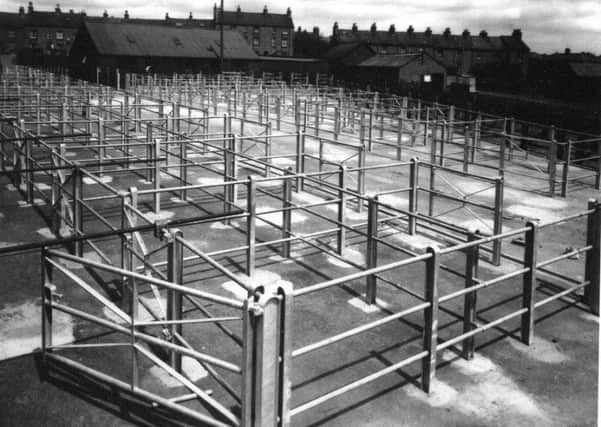Look Back with Little: Not much remains of town's old livestock market


An accompanying article included the prediction Shaftesbury Cattle Market could end as a result of the sale of land to an unnamed retail chain. This revived memories of how Banbury had lost its stockyard in 1998 despite it being the largest in the UK and one of the largest in Europe. At the time rumours abounded. These focussed on possible financial difficulties and failure to secure the chosen new site .
Nine years earlier Midland Marts Limited had issued an information sheet detailing their activities in the town. Their key statement highlighted the fact that every year they auctioned in excess of 600,000 head of stock of all classes with a money value of over £85,000,000. Their weekly programme was compressed into Wednesday and Thursday but Tuesdays were reserved for special sales held under the auspices of societies such as those concerned with British Charolais Cattle and British Limousin Cattle.
Advertisement
Advertisement
Of major importance was Banbury Christmas Stock Show, attracting entries of the highest quality from all over the country. People responsible for these were encouraged by the news previous championship winners had realised £44 per cwt in 1988 and £50 per cwt in 1989.
Throughout the year this ‘Stockyard of Europe’ organisation produced weekly sales news with dramatic headlines such as, ‘Storming Trade for Cull Cows with Limousins’. A note to farmers said, ‘Make more of your livestock at Banbury. It’s where the buyers are!’
Despite the encouragement, business came to an end in 1998. This tragic turn of events was given a special poignant focus by the Independent’s publication of a Tom Pilstonphotograph of a farmer with his penned sheep contemplating the future on the last day of the cattle market.
The occasion cried out for more government control on a regional or national scale. The article of Professor Brian Goodey of Oxford Brookes University, ‘No more to Market’ was published in Town and Country Planning magazine for January 30, 1999.
Advertisement
Advertisement
An especially important point by Brian which sadly seems to have been lost altogether reads: “The meaning of a place like Banbury is tied up in its agricultural origins. It used to be the case that people moved here because of the town’s rural context”.
Had the livestock market survived, the welcome signs on Banbury’s margins would have had more significance and people might well have been attracted to the Pedigree Centre where, before closure, Acker Bilk and his Jazz Men had been forerunners in an arena which was a sort of successor to the Winter Gardens.
The reality had been the livestock market has turned into ‘Market Quarter’ by seizing the opportunity to exploit a classic brownfield site. The net result has been the emergence of a residential area that contrasts markedly with most of the rest of Grimsbury. In the Banbury Guardian of April 1 2002, Ben Kendall summarised some of the numerous queries from those who visited the public exhibition in Grimsbury Community Hall. Several councillors drew attention to the anticipated extra traffic and the consequent problems. Other people were concerned about school and leisure facilities, bearing in mind the intention to build in excess of 300 houses on the site. Those with a good knowledge of the area warned about flooding. The National Rivers Authority had urged against further development of the flood plain.
At the stage of building after planning permission had been given it is ironic one developer used the model of a cow as a symbol of the area’s connections. Today it is good to record roads are named after railway stations on the former Banbury to Buckingham line and there are occasional glorious glimpses of the nearby mosque. However the name Market Quarter is all that reminds the resident and visitor of over 70 years of livestock related activity.